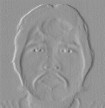On Being Neither Liberal nor Conservative
By Fr. James V. Schall, S. J.
The division of the world into "liberal" and "conservative" on every topic from politics to our taste in cuisine, clothes, or automobiles is one of the really restricting developments that has ever happened to us. If we are not what is considered popularly a "liberal," then we must, by some convoluted logic, be a "conservative," or vice versa. No third or fourth option is available as is usually the case in the real world. It has to be, we are told, either this way or that.
Such a view makes things very simple, I suppose. But it also reduces our minds to utter fuzziness. We are required to define everything as either liberal or conservative even when the two allowable terms of definition are not adequate to explain the reality that they are intended to describe.
Our political language is likewise amusingly confusing, especially when used to describe theological issues or currents. When I am asked whether I am a "liberal" or a "conservative," I reply that I am a "Thomist." Needless to say, Thomas, who was once considered a liberal Whig, is now considered a hopeless conservative, even though what he actually held defies such simple categories. In Thomas’s own methodology, the first thing he did was precisely to define what is a liberal or what is a conservative. He then explained why both, while containing some point of truth, were inadequate. Yet, it is almost impossible to escape this system of "either conservative or liberal," since whatever other category we use becomes merely grist for the liberal/conservative dichotomy.
Click here to read full text.
The division of the world into "liberal" and "conservative" on every topic from politics to our taste in cuisine, clothes, or automobiles is one of the really restricting developments that has ever happened to us. If we are not what is considered popularly a "liberal," then we must, by some convoluted logic, be a "conservative," or vice versa. No third or fourth option is available as is usually the case in the real world. It has to be, we are told, either this way or that.
Such a view makes things very simple, I suppose. But it also reduces our minds to utter fuzziness. We are required to define everything as either liberal or conservative even when the two allowable terms of definition are not adequate to explain the reality that they are intended to describe.
Our political language is likewise amusingly confusing, especially when used to describe theological issues or currents. When I am asked whether I am a "liberal" or a "conservative," I reply that I am a "Thomist." Needless to say, Thomas, who was once considered a liberal Whig, is now considered a hopeless conservative, even though what he actually held defies such simple categories. In Thomas’s own methodology, the first thing he did was precisely to define what is a liberal or what is a conservative. He then explained why both, while containing some point of truth, were inadequate. Yet, it is almost impossible to escape this system of "either conservative or liberal," since whatever other category we use becomes merely grist for the liberal/conservative dichotomy.
Click here to read full text.





